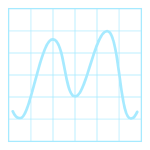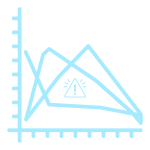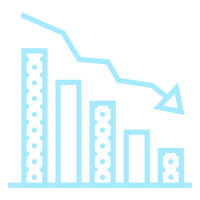Contents
CFDs, also known as, Contract for Differences is one of the most popular and worldwide famous innovative investment tools. CFDs allow traders to trade on the price movements of any financial market.
In this guide, you’ll get detailed information about CFDs, what they actually are, how do they work, what are main advantages and disadvantages of CFDs in trading, and many more. This information will help you to understand whether it is worth trading CFDs or not.
CFDs Explained
 Before going into depth, let’s see what CFDs are. CFD is the contract between two parties. Each of the parties takes their own responsibilities. Those parties are a buyer and a seller. CFDs have a defined time length and in most cases, it’s a short-term contract. The main idea of CFDs is that you’re not directly buying the assets. Instead, you’re speculating with them. After buying CFDs buyers have to pay a seller a certain amount of money. This amount of money is defined by the differences in the asset value from the time the contract started to the time it finishes.
Before going into depth, let’s see what CFDs are. CFD is the contract between two parties. Each of the parties takes their own responsibilities. Those parties are a buyer and a seller. CFDs have a defined time length and in most cases, it’s a short-term contract. The main idea of CFDs is that you’re not directly buying the assets. Instead, you’re speculating with them. After buying CFDs buyers have to pay a seller a certain amount of money. This amount of money is defined by the differences in the asset value from the time the contract started to the time it finishes.
When traders think that the value of the asset has a high potential of going up, they are buying CFDs and after their price growing they are selling particular assets. This helps them to gain money without losing time and owning an underlying asset. And if the price of assets is going to down traders tend to sell a CFD and then earn money from the mentioned decrease. This is called going short a profit.
What’s more, while buying CFDs you don’t need to pay the assets’ full value, instead, you need to pay the seller the fraction, the difference between the past and actual value. This is called the margin and people who are trading in this way are trading on margin. We can overview CFDs example to understand better how does it work. As we know, stocks, which were affordable for people with a high income, can now be traded through CFDs. For example, if you, as a buyer, see that the value of a popular company’s assets is decreasing, you will enter into CFDs, and after the stock value goes up you’ll sell it and gain a profit.
For more specifications, let’s take stock A, which is trading at 10 US dollars. You think the company’s price is about to increase so you buy 1000 CFDs. Company A has a margin rate of 10% which means, that you only have to deposit 10 percent of the total value of the trade as a position margin. Therefore, since 1000 CFDs multiplies on $10 that is $10 000, and the 10% of $10 000 is $1000, it can be said, that your position margin is $1000. Now, let’s say that stock A increased to $15. As long as you have 1 000 CFDs, multiplying it on $15 equals $15 000. $15 000 – $10 000 equals to $5 000. So, that is your profit as position margin, while investing only $1 000.
Is Trading With CFDs Legit?
 There are some countries where it’s allowed to trade with CFDs and is strictly regulated and there are other ones where the mentioned type of trading is allowed. However, the restrictions don’t mean that traders cannot trade with the CFDs assets.
There are some countries where it’s allowed to trade with CFDs and is strictly regulated and there are other ones where the mentioned type of trading is allowed. However, the restrictions don’t mean that traders cannot trade with the CFDs assets.
Even though, for example in the United States trading through CFDs is banned they are allowed in listed over-the-counter (OTC) markets in many major trading countries. What does OTC mean? It defines the processes that are necessary to take while trading with securities for companies that are not listed on a formal exchange. OTC helps traders to have access to the instruments that otherwise are unavailable to them. So, through OTC USA traders can trade with CFDs. Unlike the USA, there are many countries, where trading with CFDs is allowed, including the UK, Spain, Australia, Canada, Russia, Turkey, Germany, Poland, Austria, Denmark, and so on.
Advantages of CFDs
One of the biggest advantages of CFDs is that it allows people to trade on a margin. Margin is leverage, which allows you to put up a small portion of the national value of the asset so if you’re buying a hundred thousand dollars worth of shares in a normal share environment you’d have to put a hundred thousand dollars with it, it’d give you the shares now. If you’re trading on margin let’s just say the margin requirement for that share is just 10%, then you have to put up just ten thousand dollars to control a hundred thousand dollars CFD the notional value of the CFD there was. You have the same position but all you got to do is put up ten thousand dollars. So, there a lot of benefits from that as you can see. You can have bigger positions, you can have lots of different positions and broader your horizon.
The number second advantage of CFD trading is that there is no stamp duty to pay. You just need to pay a commission. Commissions are normally a little bit higher than shares or they can be lower, as well, it depends on the market volatility and the volatility of the underlying assets. What’s more, in most cases, you’ll profit from fixed spreads.
Furthermore, one of the significant advantages of CFD trading is that it allows traders to have access to the global market from one platform. Apart from that, customers can get a 24-hour service and trade without additional obstacles.
Moreover, CFD trading has no shorting rules or borrowing stocks. While trading through them traders aren’t forced to obey the rules like certain markets. Unlike certain markets, CFD trading allows people to profit from a short position. A short position means that traders sell certain assets to repurchase them or covering them later at a lower price.
While some of the markets require investors to trade daily, CFDs trading doesn’t have such kind of requirement. Instead, traders can trade whenever they want and as they wish. What’s more, the amount of money for opening an account can be as low as $1000.
One more additional profit traders can get from CFD trading is that it gives a chance to all the traders to diversify their portfolios. CFDs allow people to trade with stocks, indices, treasuries, get involved in CFDs Forex and commodities, as well.
Disadvantages of CFDs
 Even though that CFD trading has plenty of advantages there are some risks and disadvantages too, that should be considered.
Even though that CFD trading has plenty of advantages there are some risks and disadvantages too, that should be considered.
One of the disadvantages is that traders have to pay the spread. While trading with CFDs can be beneficial in the case of rising in assets’ value, it can be disadvantageous and lead you to losses, when the value drops. Even a little fluctuation in assets value can have a big effect on your deposit size, including negatively. And while most of the markets take benefit from traders through regulating and licensing systems, commission fees, and higher capital requirements, CFDs take traders’ money through the spread costs.
Apart from that, as the CFD industry is newly developed it’s not highly regulated and its regulation system is poor. So, there is an increased chance to come across scammers, unlike in more regulated markets. However, that’s not even a big problem, because traders can research a certain broker’s background and decide whether it should be trusted or not.
Furthermore, one of the drawbacks of CFD trading is its leverage risks. Even though CFD traders can profit from the stop-loss limit feature, it doesn’t fully guarantee to exterminate their losses, especially when the market prices get extremely volatile and unstable.
Instruments You Can Trade Through CFDs
As we have already mentioned, there are several types of securities and assets, which are available to trade through CFDs.
CFDs in forex are extremely popular. Traders can buy through CFD several types of currency pairs, from the most common currency pairs, like EUR/USD to some of the exotic currency pairs. It all depends on their preferences and the money gaining potential.
What’s more, people can get CFDs on stocks. As we know, directly purchasing stocks costs a lot and requires a big amount of money. Through CFDs, their costs are affordable for more people and investors.
Furthermore, traders can get commodities through CFDs, as well. In the time period, when their prices get extremely low, for example, for the most demanding commodity – oil, traders are purchasing them indirectly and sell them after their prices go up and high. These kinds of possibilities allow traders to see a lot of profits and money earnings.
Moreover, traders can use CFDs while trading with indices. CFDs on the index are extremely popular with investors, nowadays. Also, traders can have access to interest rates and bonds, shares, and thousands of individual markets.
How to Start Trading Through CFDs?
Starting CFD trading includes very quick and simple steps to take:
Step 1 – Choose a Market
 For this step traders need to search for those trading opportunities which are more preferred and suitable for them. In this process, they can use some of the research tools, which are provided by almost every trading platform. Traders should take into account that until starting research about markets, they need to have a trading platform, as well. In most cases, trading platforms are offered by the broker. So, very first, investors need to choose a broker which seems trustworthy and profitable for them. After choosing the brokerage, traders will find their preferred trading platform, and through the analytical and research tools will choose the market.
For this step traders need to search for those trading opportunities which are more preferred and suitable for them. In this process, they can use some of the research tools, which are provided by almost every trading platform. Traders should take into account that until starting research about markets, they need to have a trading platform, as well. In most cases, trading platforms are offered by the broker. So, very first, investors need to choose a broker which seems trustworthy and profitable for them. After choosing the brokerage, traders will find their preferred trading platform, and through the analytical and research tools will choose the market.
Step 2 – Deciding Positions
After choosing the market, traders need to decide what are their position – are they going to go long or go short. Going short means that traders are going to sell assets and going long means that traders are going to buy instruments. One of the main things, which supports traders to decide whether to be buyers or sellers is the prices. While trading with CFDs there are two types of prices – the first one is the bid also known as sell price and the second one is the buy price also known as the offer. Depending on the existing prices traders are choosing their positions. Besides, the differences between the bid and offer prices are called the spread. If traders think, that a certain asset’s price is going to increase, they are going long and if they think that a certain instrument has the potential to decrease in its value, then traders go short.
Step 3 – Trade Size
After deciding what will be their operating positions, traders are selecting their trade size. Trading through CFDs means that traders are allowed to trade with more than one CFD. So, after taking the above-mentioned processes, they need to select the number of CFDs they wish to trade. While equity trading 1 CFD equals 1 share. However, while trading with other instruments like commodities, indices, currencies, FX, and so on, equality is defined divergently. The value of 1 CFD, regularly, depends on the securities and instruments investors are trading with. What’s more, every trader should take into account the existence of margin in CFD trading. As trade size increases, margin goes up respectively. The initial margin for traders can be calculated through a margin calculator.
Step 4 – Stop and Limit Orders
As we have already mentioned above, CFD trading’s one of the most prominent features is that it provides traders with stop losses function. It’s significant for traders to consider the existing risks until placing their trades. This is possible through their risk management strategy. One of the main parts of risk management is adding stop and limit orders. It supports traders with the automated system which closes the trade when the market reaches a definite level. This level should be indicated by the traders. This function supports traders with the opportunity to control their losses and minimize their costs. Furthermore, in most cases, the mentioned function is free to use.
Final Steps
After taking the above-discussed steps, traders need to monitor their trade. Through trading platforms, traders can track market prices, get real-time updates, and decide whether it worth it to continue trading with a certain instrument or not. Also, traders need to close their trades. Once, the traders decide they are ready for closing their trades they should select the option of “close position”, which can be seen at the positions window. After closing trades, all the profit traders get through CFDs trading will be reflected on traders’ accounts.
So, as we see, even though that there are some risks while trading with CFDs they are more beneficial and profitable. CFDs allow traders to have access to the global market and diversify their portfolios.

